Want to elevate your cooking skills and impress your guests with restaurant-quality meals? Look no further than gourmet cooking techniques.
These techniques, designed for those who crave control in the kitchen, will empower you to create culinary masterpieces. From sous vide, which ensures perfectly cooked meats every time, to molecular gastronomy, which allows for innovative flavor transformations, these techniques will take your cooking to new heights.
With the precision of sous vide, you’ll be able to infuse flavors, achieve the perfect crust with searing, and create delicate seafood dishes. Additionally, sous vide is ideal for tenderizing tough cuts of meat and achieving velvety texture for vegetables.
Master the art of egg cookery and learn the artful presentation techniques of plating. Let’s embark on a gourmet culinary journey together.
Key Takeaways
- Sous Vide cooking techniques ensure consistent results and allow for specific levels of doneness.
- Molecular Gastronomy techniques use scientific principles to create visually stunning and flavorful dishes.
- Searing techniques are crucial for achieving a perfect crust and locking in juices.
- Egg cookery and plating techniques enhance culinary skills and elevate the dining experience.
Sous Vide: Perfectly Cooked Meats
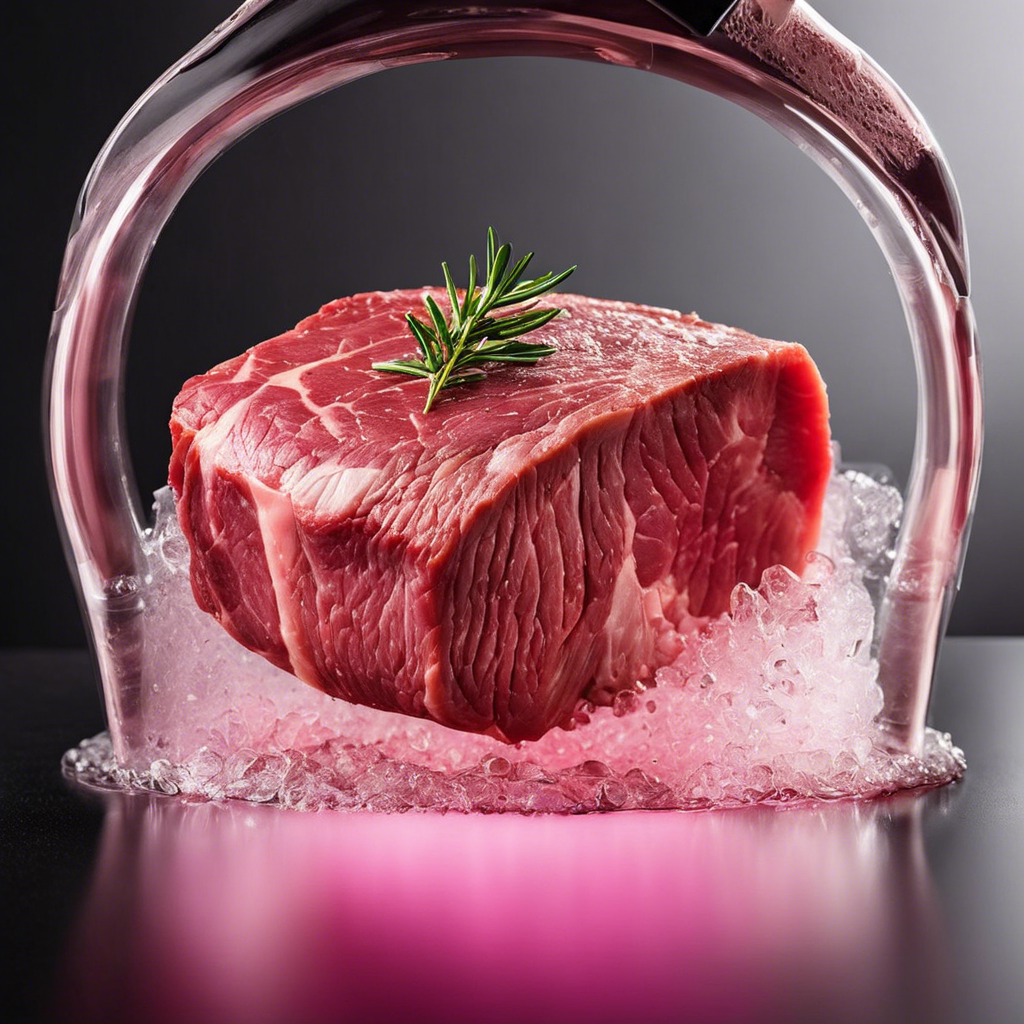
To achieve perfectly cooked meats, start by using the sous vide technique. Sous vide, which means ‘under vacuum’ in French, is a cooking method that involves sealing food in a vacuum-sealed bag and cooking it in a water bath at a precise, controlled temperature. The beauty of sous vide lies in its temperature control, allowing you to cook your meats to the exact level of doneness you desire. Whether you prefer a medium-rare steak or a well-done chicken breast, sous vide ensures consistent results every time.
One of the advantages of using sous vide is the ability to cook meats to a specific temperature, resulting in tender and juicy results. Unlike traditional cooking methods where the heat source is in direct contact with the food, sous vide cooking surrounds the meat with evenly distributed heat. This gentle cooking process prevents overcooking and ensures that the meat retains its natural flavors and moisture.
Additionally, sous vide cooking times are more forgiving compared to other methods. With traditional cooking techniques, it can be challenging to achieve the perfect level of doneness without risking undercooked or overcooked meat. Sous vide eliminates this guesswork by allowing you to set the desired cooking time precisely. Whether you’re cooking a thick cut of beef or a delicate piece of fish, sous vide ensures consistent results every time.
Molecular Gastronomy: Innovative Flavor Transformations
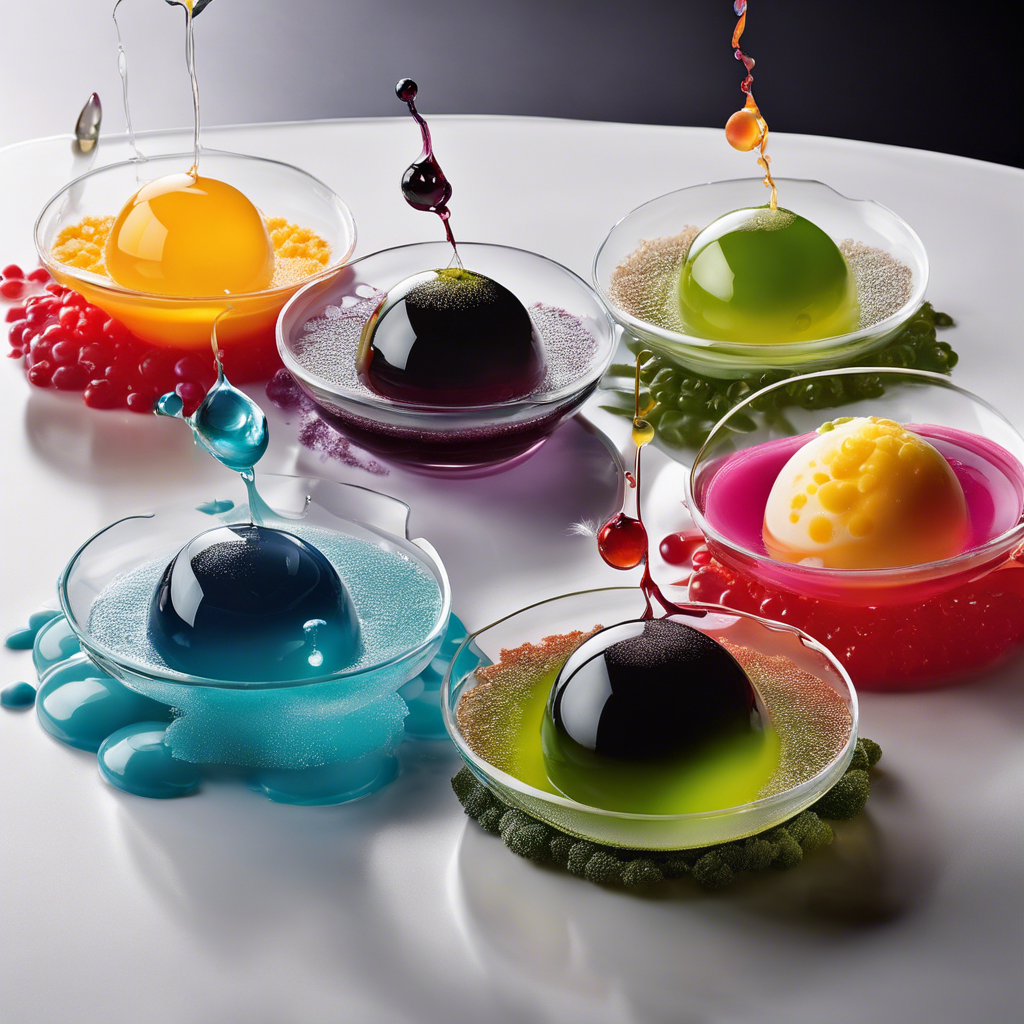
Explore the innovative flavor transformations of molecular gastronomy through unique techniques and ingredients. This cutting-edge culinary approach takes cooking to new heights, allowing you to push the boundaries of taste and texture. With molecular gastronomy, you have the opportunity to experiment with flavors in ways that were previously unimaginable.
One of the hallmarks of molecular gastronomy is its use of innovative techniques. By employing scientific principles and tools, chefs can create dishes that are visually stunning and bursting with flavor. Techniques such as spherification, which transforms liquids into delicate spheres, and foams, which add a light and airy texture to dishes, are just a few examples of the endless possibilities that molecular gastronomy offers.
In addition to the techniques, molecular gastronomy also encourages flavor experimentation. By using ingredients in unexpected ways, chefs can create surprising and delightful flavor combinations. For example, using liquid nitrogen to freeze ingredients instantly can result in unique and intense flavors. By infusing flavors into liquids or powders, chefs can create exciting taste explosions that awaken the senses.
Molecular gastronomy allows you to take control of your cooking and explore flavors in ways you never thought possible. With its innovative techniques and focus on flavor experimentation, this culinary approach opens up a world of possibilities for creating unforgettable dining experiences. So, grab your lab coat and get ready to embark on a gastronomic adventure unlike any other.
Sous Vide: Infusing Flavors With Precision
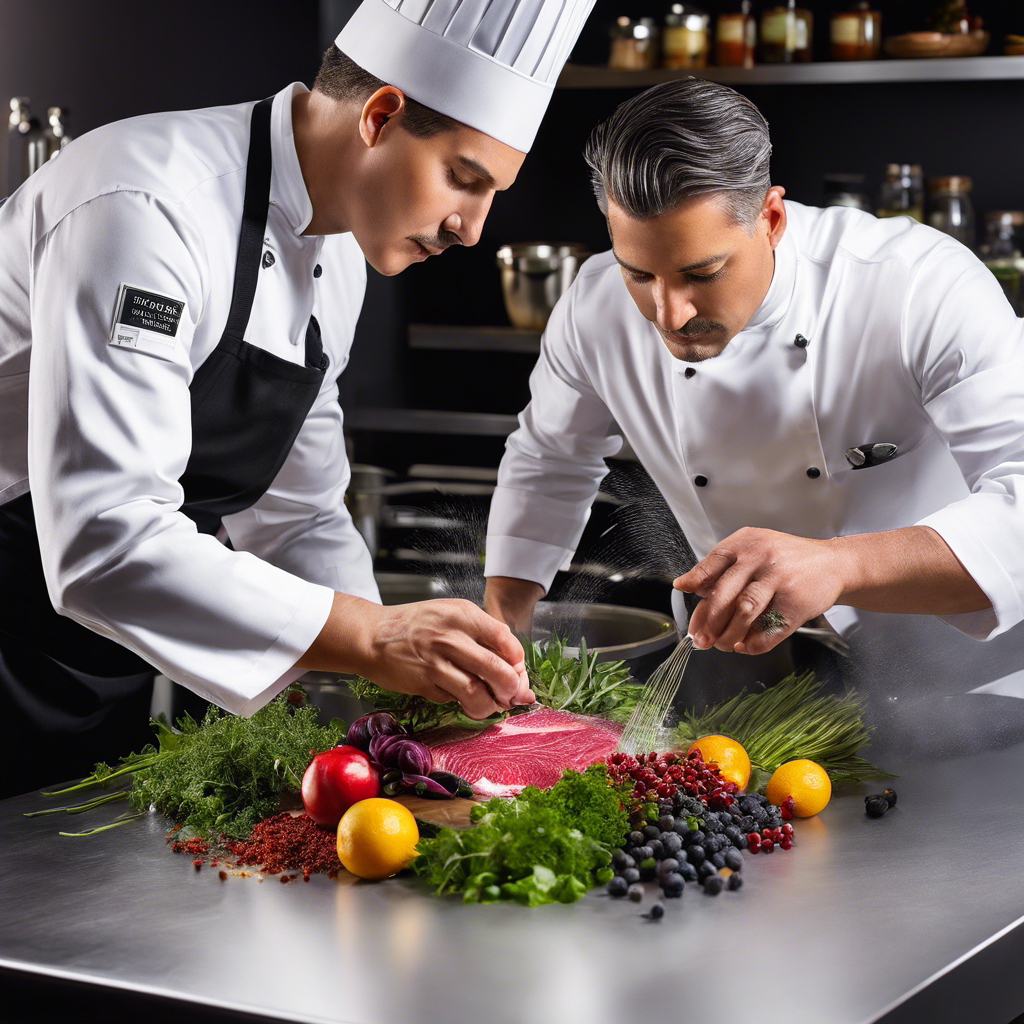
Continue your culinary exploration by delving into the precision of infusing flavors with sous vide cooking. Sous vide, a French cooking technique meaning ‘under vacuum,’ allows you to enhance the flavors of fruits and vegetables with unparalleled precision. By vacuum sealing your ingredients in airtight bags and cooking them in a water bath at a precise temperature, you can achieve consistent and precise results every time.
Here are three ways sous vide cooking can transform your culinary creations:
-
Infusing fruits: Sous vide provides a unique opportunity to infuse fruits with flavors that would otherwise be difficult to achieve. By sealing fruits like strawberries or citrus slices with herbs, spices, or even alcohol, you can slowly infuse the flavors into the fruit, resulting in a harmonious blend of taste and aroma.
-
Infusing vegetables: Sous vide allows you to bring out the natural flavors of vegetables while maintaining their vibrant colors and nutrients. By cooking vegetables such as carrots or asparagus at a precise temperature, you can enhance their inherent sweetness and tenderness, creating a truly memorable side dish.
-
Enhancing flavors with vacuum sealing: Vacuum sealing your ingredients before cooking not only helps to preserve their natural flavors but also intensifies them. By removing the air from the bag, the flavors of the ingredients become concentrated, resulting in a more intense and flavorful end product.
With sous vide cooking, you have complete control over the infusion of flavors, ensuring that every bite is a burst of taste and texture. So grab your sous vide machine and embark on a culinary adventure where precision is key.
Searing: Achieving the Perfect Crust
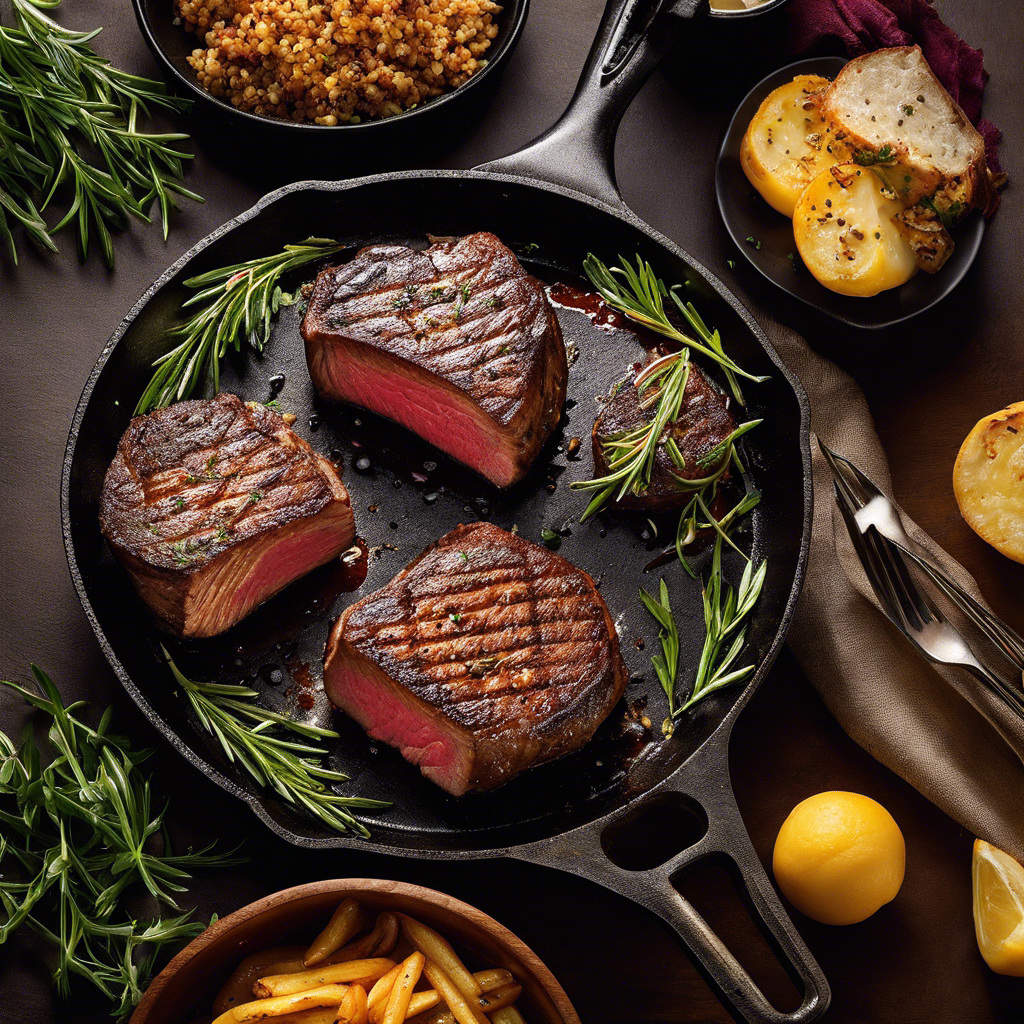
Now that you have mastered the precision of sous vide cooking, it’s time to delve into the technique of searing to achieve the perfect crust. Searing is a crucial step in gourmet cooking that brings out rich flavors and adds a delightful texture to your dish. Achieving caramelization is key to creating that beautiful crust on your meat or vegetables. When searing, the high heat causes the natural sugars in the food to caramelize, resulting in a deep, complex flavor profile. The Maillard reaction takes place, creating a golden brown crust that’s visually appealing and enhances the taste experience.
To achieve the perfect crust, it’s important to retain moisture in your food. Searing at a high temperature for a short period of time seals in the juices, keeping the interior moist and succulent. The key is to preheat your cooking surface and use a cooking fat with a high smoke point, such as vegetable oil or clarified butter. This helps to create a barrier between the food and the pan, allowing for even heat distribution and preventing the food from sticking.
When searing, it’s essential to have control over the process. Pay attention to the color and texture of the crust as it develops. Use tongs to gently flip the food, ensuring an even sear on all sides. A well-executed sear will elevate your dish, adding depth and complexity to your culinary masterpiece.
Sous Vide: Delicate Cooking for Seafood
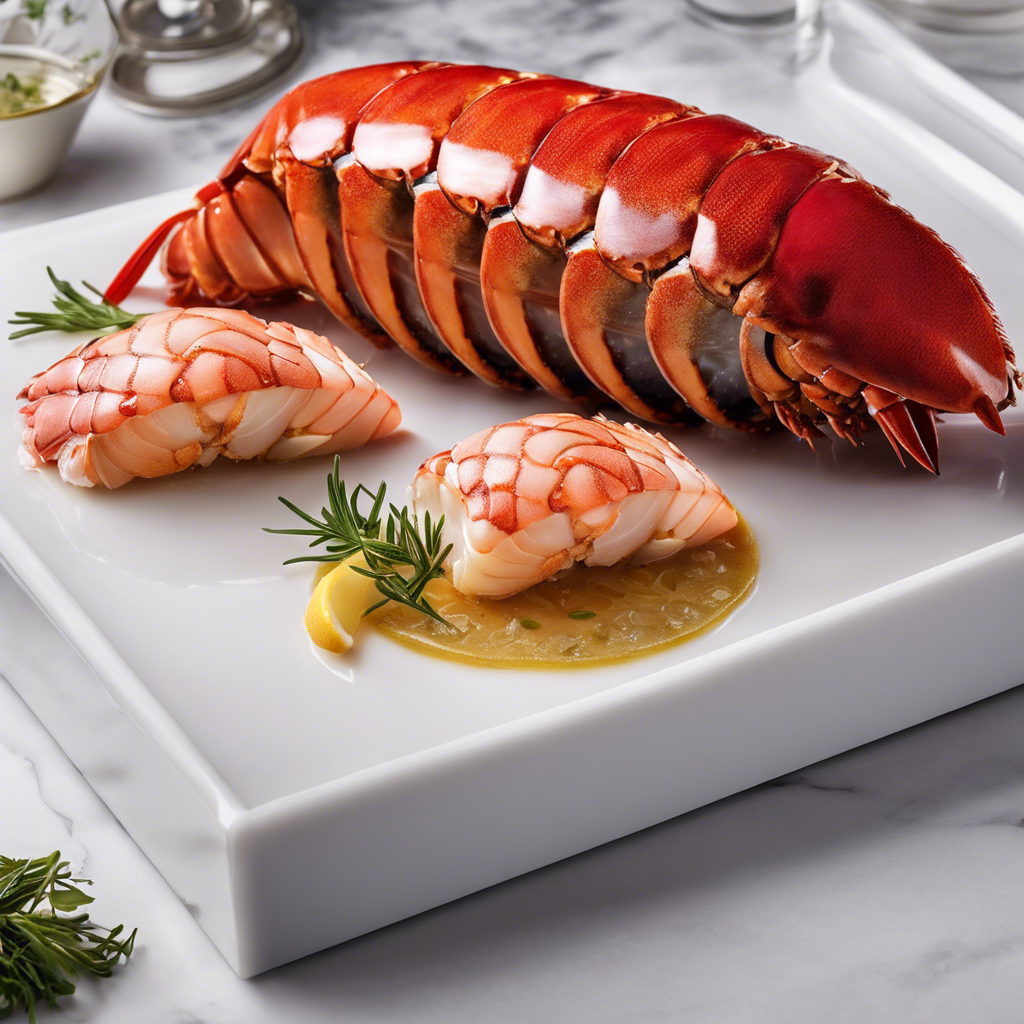
For delicate cooking of seafood, you’ll need to master the technique of sous vide. Sous vide, which translates to ‘under vacuum’ in French, is a precise cooking method that involves vacuum-sealing food in a plastic pouch and cooking it in a water bath at a precisely controlled temperature. This technique ensures that the delicate seafood is cooked to perfection, with its natural flavors and textures preserved.
To achieve the best results when cooking delicate seafood using sous vide, here are three key things to keep in mind:
-
Temperature control: Sous vide allows you to cook seafood at a low and precise temperature, ensuring that it’s cooked evenly and retains its tenderness. For delicate seafood such as fish or scallops, a temperature of around 130°F (55°C) is ideal.
-
Timing: Sous vide cooking requires longer cooking times compared to traditional methods, but it allows for precise control over the cooking process. Be sure to follow recommended cooking times for the specific seafood you’re preparing.
-
Precision infusion: Sous vide isn’t only about cooking seafood gently, but it also allows for flavor infusion. You can enhance the delicate flavors of seafood by adding aromatics, herbs, or even butter to the vacuum-sealed pouch before cooking. This precision infusion ensures that the seafood absorbs the flavors evenly without overpowering its natural taste.
Smoking: Adding Smoky Flavors to Your Dishes

To add smoky flavors to your dishes, master the technique of smoking, a method that infuses food with the rich aroma and taste of smoke. Smoking is a culinary technique that has been used for centuries to enhance the flavor of various foods. By exposing food to smoke from burning wood chips, you can create a depth of flavor that is unique and delicious.
When it comes to smoking techniques, there are a few key factors to consider. First, you need to choose the right wood chips for the job. Different types of wood will impart different flavors, so it’s important to select the right one for the dish you’re preparing. For example, hickory chips are known for their strong and bold flavor, while fruitwood chips like apple or cherry provide a sweeter, more delicate smoke.
To help you understand the different types of wood chips and their flavors, here is a table that you can refer to:
| Wood Type | Flavor Profile |
|---|---|
| Hickory | Strong and bold |
| Mesquite | Intense and earthy |
| Apple | Sweet and fruity |
| Cherry | Mild and fruity |
Sous Vide: Tenderizing Tough Cuts of Meat

Tenderizing tough cuts of meat can be achieved through the technique of sous vide, a method that involves cooking the meat at a low, controlled temperature in a vacuum-sealed bag. Sous vide is a French term that translates to ‘under vacuum,’ and it has gained popularity among gourmet chefs for its ability to produce tender and succulent meat.
With sous vide, temperature control is key. The meat is cooked slowly and evenly, allowing the collagen in the tough cuts to break down over time. This results in meat that’s incredibly tender and moist, with flavors that are intensified and retained.
Here are three reasons why sous vide is an excellent choice for tenderizing tough cuts of meat:
-
Precise Temperature Control: Sous vide allows you to set the exact temperature at which you want your meat to cook. This ensures that the meat is cooked to the perfect level of doneness, without any risk of overcooking or drying out.
-
Slow Cooking: The slow cooking process of sous vide allows for the gradual breakdown of collagen in tough cuts of meat. This results in meat that’s tender and easy to chew, without sacrificing any flavor.
-
Enhanced Flavor: By cooking the meat in a vacuum-sealed bag, all the flavors and juices are locked in. This means that the meat retains its natural taste and becomes even more flavorful and succulent.
Sous vide is a technique that gives you complete control over the tenderness and taste of your meat. With precise temperature control and slow cooking, you can transform tough cuts into gourmet delicacies that will impress even the most discerning palates.
Sous Vide: Creating Velvety Texture for Vegetables
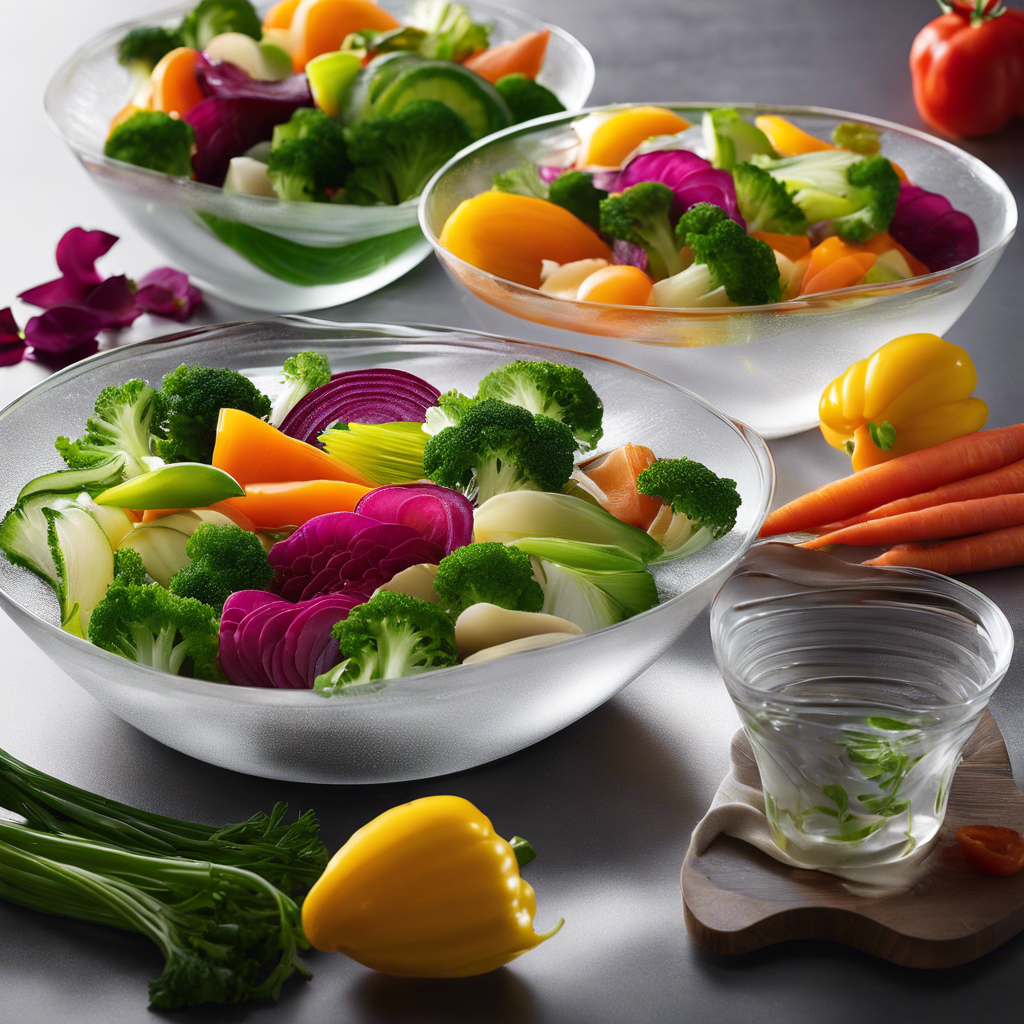
To achieve a velvety texture for your vegetables, incorporate sous vide into your cooking routine regularly. Sous vide, a cooking method that involves vacuum-sealing food and cooking it in a precise water bath at a controlled temperature, isn’t only for tenderizing tough cuts of meat. It can also work wonders for vegetables, transforming them into delicate and silky delights.
When cooking vegetables sous vide, you have full control over the cooking temperature, ensuring that they’re cooked to perfection without becoming mushy or overcooked. This precise temperature control allows for a gentle and even cooking process, resulting in vegetables that retain their natural flavors and vibrant colors.
One of the key benefits of using sous vide for vegetables is the ability to infuse them with precise flavors. By vacuum-sealing the vegetables with herbs, spices, or marinades, the flavors are absorbed more deeply, resulting in a more intense and complex taste profile. This technique is especially effective for root vegetables like carrots, beets, and potatoes, as it helps to bring out their inherent sweetness.
Incorporating sous vide into your cooking routine will elevate your vegetable dishes to a whole new level. The velvety texture and precise flavor infusion will impress even the most discerning palate. So go ahead, experiment with different vegetables and flavor combinations, and enjoy the delightful results that sous vide can bring to your table.
Sous Vide: Mastering Egg Cookery
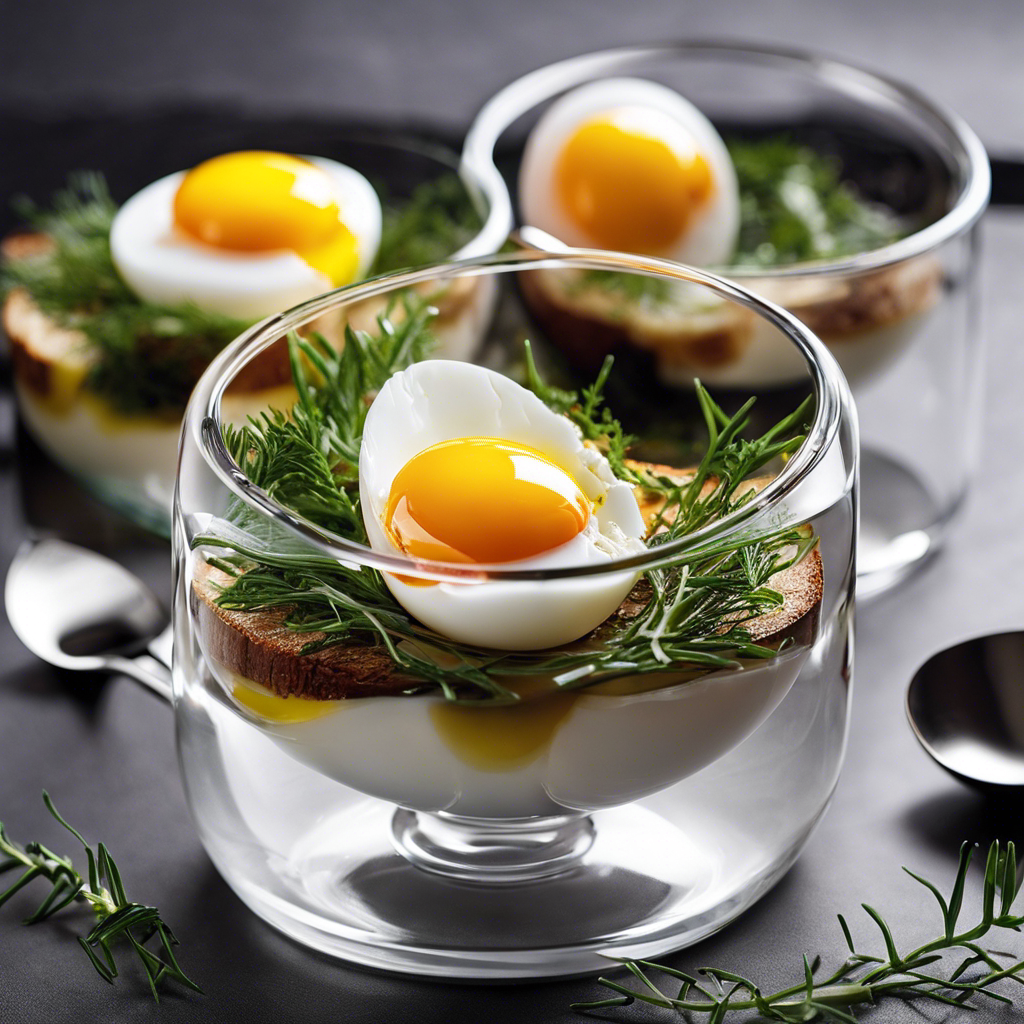
Mastering egg cookery with sous vide is a game-changer for achieving precise and consistent results every time you cook eggs. Sous vide, a cooking technique that involves cooking food in a temperature-controlled water bath, is particularly effective for mastering poached eggs.
Here are three reasons why exploring different egg cooking methods with sous vide can take your egg cookery skills to the next level:
-
Perfectly Poached Eggs: With sous vide, you can achieve perfectly poached eggs with a silky, custard-like texture. By cooking the eggs at a precise temperature for a set amount of time, you can ensure that the egg whites are fully set while the yolk remains beautifully runny.
-
Consistency: Sous vide cooking eliminates the guesswork and inconsistency that often comes with traditional egg cooking methods. With precise temperature control, you can consistently achieve your desired level of doneness, whether it’s a soft-boiled egg with a slightly runny yolk or a fully cooked hard-boiled egg.
-
Versatility: Sous vide opens up a world of possibilities when it comes to egg cookery. You can experiment with different egg preparations, such as custards, quiches, and even desserts. The gentle and even cooking of sous vide ensures that your eggs are cooked to perfection, no matter the dish.
Plating: Artful Presentation Techniques
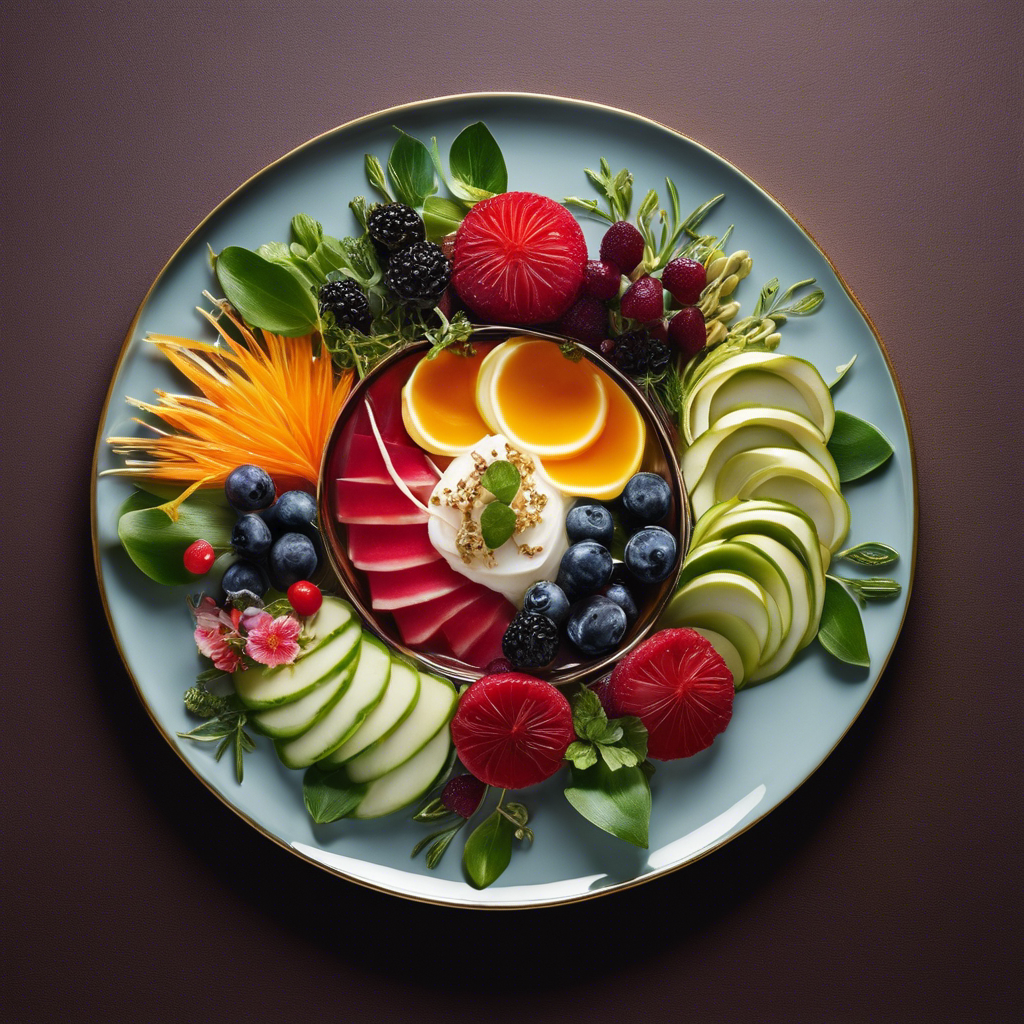
When plating your expertly cooked sous vide eggs, consider artful plating techniques to elevate the visual appeal of your dish. Presentation is just as important as taste when it comes to creating a memorable dining experience. With the right techniques, you can transform a simple dish into a work of art that delights the senses.
One artful plating technique to consider is the use of negative space. By strategically leaving empty spaces on the plate, you can draw attention to the main components of the dish. This creates a visually pleasing balance and allows the flavors to shine.
Another technique is the use of vibrant colors. Incorporating colorful ingredients like fresh herbs, edible flowers, or brightly colored sauces can add visual interest and make your dish pop. Consider contrasting colors to create a visually striking presentation.
Texture is also an important element to consider. Play with different textures by incorporating crispy elements, creamy sauces, or crunchy toppings. This not only adds variety to the dish but also adds depth to the visual presentation.
Lastly, consider using innovative flavor transformations to surprise and delight your guests. For example, you can experiment with molecular gastronomy techniques like foams, gels, or powders to create unique flavors and textures.
Frequently Asked Questions
What Is the Best Type of Meat to Use for Sous Vide Cooking?
For the best sous vide cooking experience, you’ll want to choose the best cuts of meat. Factors such as tenderness, flavor, and cooking times should be considered.
How Does Molecular Gastronomy Enhance the Flavors of a Dish?
"Molecular gastronomy techniques utilize culinary chemistry to enhance the flavors of a dish. Through innovative cooking methods, these techniques manipulate ingredients on a molecular level, resulting in an explosion of taste and sensory delight."
Can Sous Vide Cooking Be Used for Fruits and Vegetables?
Yes, sous vide cooking can be used for fruits and vegetables. This technique involves sealing the ingredients in a vacuum-sealed bag and cooking them at a precise temperature in a water bath. It helps to retain the natural flavors and textures of the produce, resulting in delicious and tender results.
What Are the Different Techniques for Achieving the Perfect Crust When Searing Meat?
To achieve the perfect crust when searing meat, you need to focus on achieving caramelization and using browning techniques. These methods will give your meat a beautiful golden brown color and a delicious depth of flavor.
How Does Smoking Add Smoky Flavors to Dishes and What Types of Wood Are Commonly Used?
To add smoky flavors to your dishes, smoking techniques can be used. Different types of wood are commonly used, such as hickory, mesquite, and applewood. Each wood imparts its unique flavor, allowing you to experiment and tailor your dish to perfection.
Conclusion
In the world of gourmet cooking, mastering different techniques can elevate your dishes to a whole new level.
Did you know that using the sous vide method can result in meats that are cooked to perfection with precise temperature control? It’s a game-changer for achieving tender and flavorful results.
And if you’re feeling adventurous, molecular gastronomy offers innovative ways to transform flavors. With a touch of artful plating, you can create a culinary experience that’s both visually stunning and delicious.
So why not explore these techniques and take your cooking skills to new heights?
